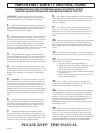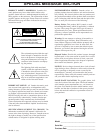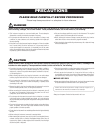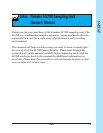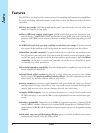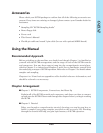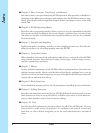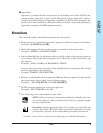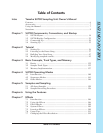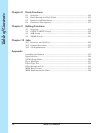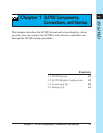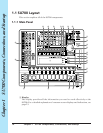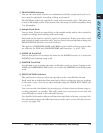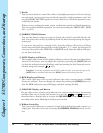
Intro
8 Intro
■ Chapter 3: Basic Concepts, Track Types, and Memory
Introduces basic concepts underlying SU700 operation. Also provides a detailed ex-
planation of the different track types, and explains how the SU700 memory is orga-
nized. You should read through this chapter before you begin serious work with
the SU700.
■ Chapter 4: SU700 Operating Modes
Describes the six operating modes. Shows you how you can immediately identify
the current mode by looking at the screen display; explains how you move from
one mode to another; and indicates the operations that are and are not available
from each mode.
■ Chapter 5: Samples and Sampling
Explains samples, sampling, and the various sampling parameters. Provides de-
tailed procedures for recording samples onto the SU700.
■ Chapter 6: Using the Features
Offers detailed, reference-level explanations about how to use each of the SU700’s
song-related features. Describes pad usage, knob usage, ribbon usage, scenes,
markers, quantizing, and more.
■ Chapter 7: Effects
Gives a detailed explanation of the SU700’s effects implementation. Describes the
relation between tracks, effects, and the three effect blocks; explains how to set up
the effects and record your setups into scenes; and explains the difference between
system effects and insertion effects.
■ Chapter 8: Knob Functions
Gives detailed information about the 22 parameters controlled by the track knobs.
■ Chapter 9: Editing Functions
Describes the functions provided by the SU700’s Editing Function panel. You use
these features to clear or set up the effects, to delete note events, to reset knob set-
tings to their defaults, and to assist in name-editing.
■ Chapter 10: Jobs
Provides detailed explanations and procedures for all of the SU700 jobs. You use
these jobs for a wide variety of purposes—to configure your system, to save and
load data, to edit or delete song data, to set the track characteristics, and much
more.




